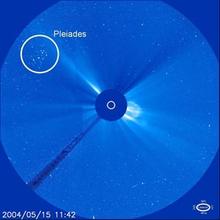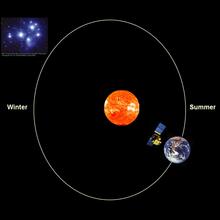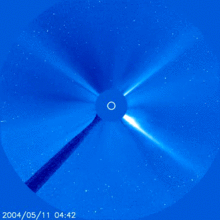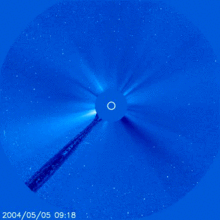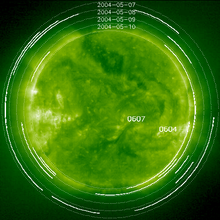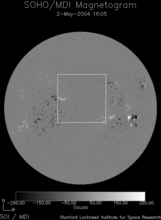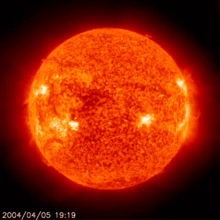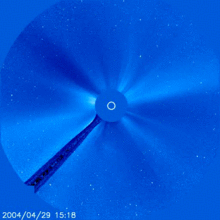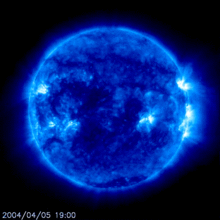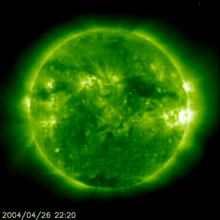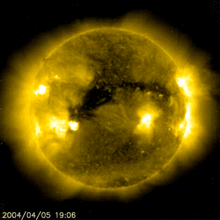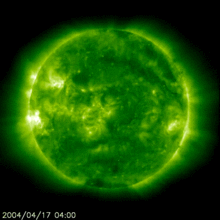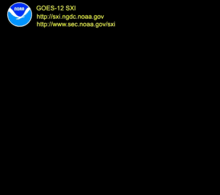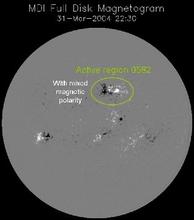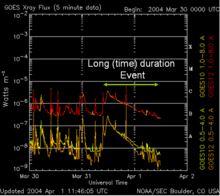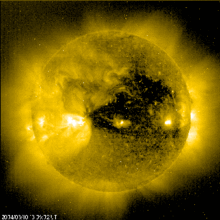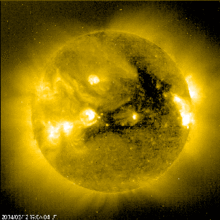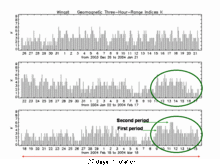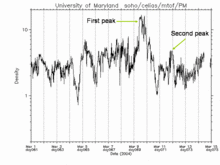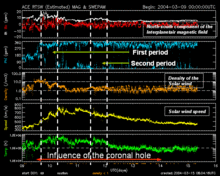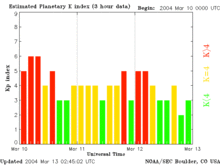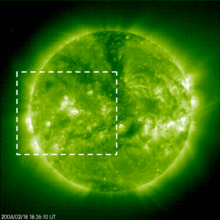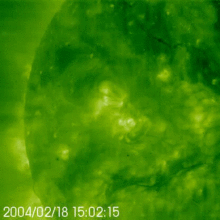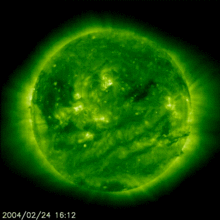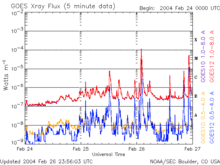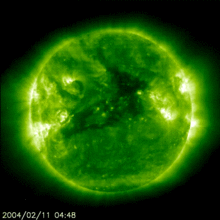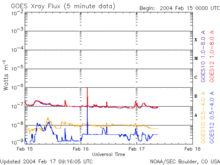news
Submitted on 2004-05-17
Since May 12, the Pleiades are visible in images taken by LASCO/C3, a coronograph onboard of SOHO. As this cluster of stars 'travels' from left to right in a series of LASCO images, they will disappear end May. View in the image underneath the Pleiades in the field of view of LASCO/C3.
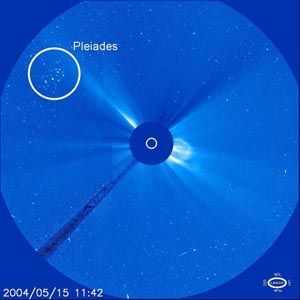
Submitted on 2004-05-11
CACTus is not a plant, it's a software tool "Computer Aided CME Tracking" developed by the SIDC to autonomously detect coronal mass ejections (CMEs) in a series of pictures taken by LASCO, the coronograph onboard of SOHO. On May 10, CACTus detected a partial halo CME. There is only a small chance that the glancing blow in two of three days affects the earth magnetic field.
Submitted on 2004-05-06
Late April 29, we could witness the birth of a sunspot which made already some fuzz before it even got a name. With an amazing speed the baby became an adult with a complex magnetic configuration. May 1 and May 2 turned out to be its glory days.
Fragment of the weekly bulletin from April 26 until May 2:
Submitted on 2004-04-29
The SOHO team announced on April 27, 2004 at 21:00 UT that SOHO is back in normal mode. The satellite can continue its scientific mission. This is indeed a great relief for us, forecasters. Underneath the first EIT-movies made since the satellite is again in normal mode.
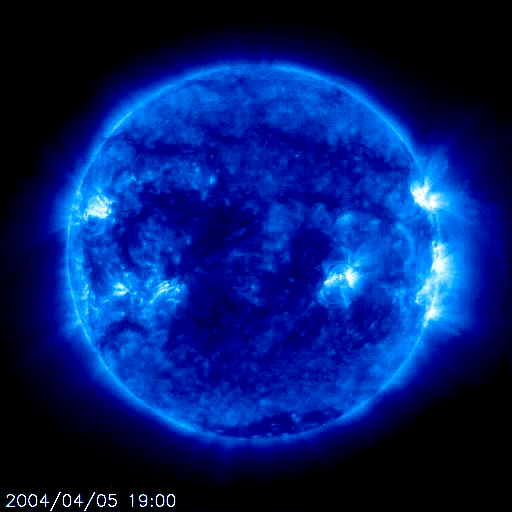
EIT 171
Submitted on 2004-04-23
The EIT-telescope as well as LASCO have become temporarily blind. An onboard computer remarked a virtual malfunction and ordered the satellite to go into the 'safe' mode in which only vital functions are kept alive.
Newsflash broadcast on the SOHO-webpage on April 21, 2004
"... SOHO entered ESR (safe) mode at 05:37 UT. The ESR was triggered by the FSPAAD (Fine Sun Pointing Attitude Anomaly Detector)."
Submitted on 2004-04-02
On March 24 and 25, two M-flares were registered from an active region still behind the east limb. First visible in SOHO/MDI on March 25, 16:06 the group seemed to have a promising flaring future. It fell short of our expectations. But, on March 31, the giant woke up and produced a long duration event continuing for more than 24 hours!
Submitted on 2004-03-18
Last week, a large coronal hole played the leading part in the space weather news, just as it also did 27 days ago.
Submitted on 2004-03-08
Since 1998, shutterless EIT campaigns led by the SIDC, were run to spot particular solar events. "Small scale" - "short time variations" are two of the key words of these campaigns. The last shutterless campaign was held on February 18 and 25, 2004.
Submitted on 2004-03-01
Sunspot group 67 launched an X1.1 flare.
Submitted on 2004-02-16
The Sun veiled itself in silence: no flares, low solar wind speed, descending 10cm Flux. On Earth, we are experiencing quiet geomagnetic conditions. Although, a large prominence is visible in EIT imagery and might be blown off. The movie below shows the evolution in time of the prominence. From February 14 onwards, we see an agile, spiral shaped black structure in the upper left corner.

Pages
Zircon - This is a contributing Drupal Theme
Design by
WeebPal.


